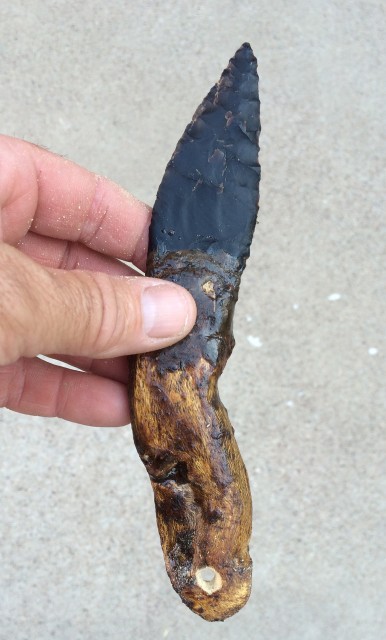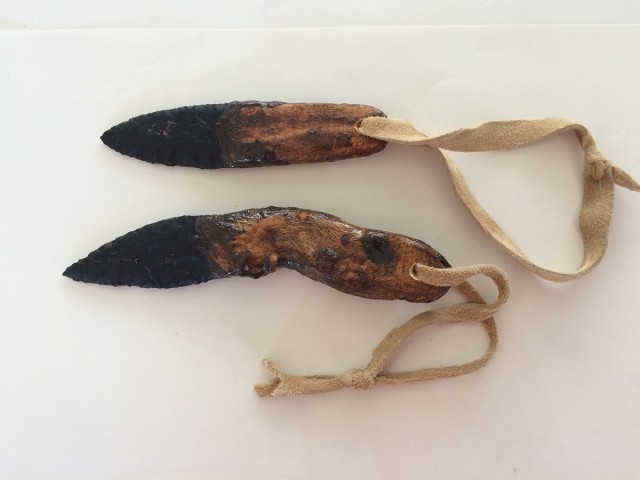- Home
- >
- Preservation Archaeology Blog
- >
- Hands-On Archaeology: How to Haft a Stone Knife, D...
(September 2, 2016)—During the field school for the past two years we have used hafted stone knives to carve the hooks in our atlatls. These knives also work incredibly well for a variety of tasks, from carving wood to cutting willows. They can be used like a saw, a rasp, or a carving knife. I also make lanyard-sheaths that can be hung around the user’s neck so the knife is always close at hand but protected.
I have three knives from this summer and one from the summer before. Each required only one re-sharpening each summer.
Disclaimer!
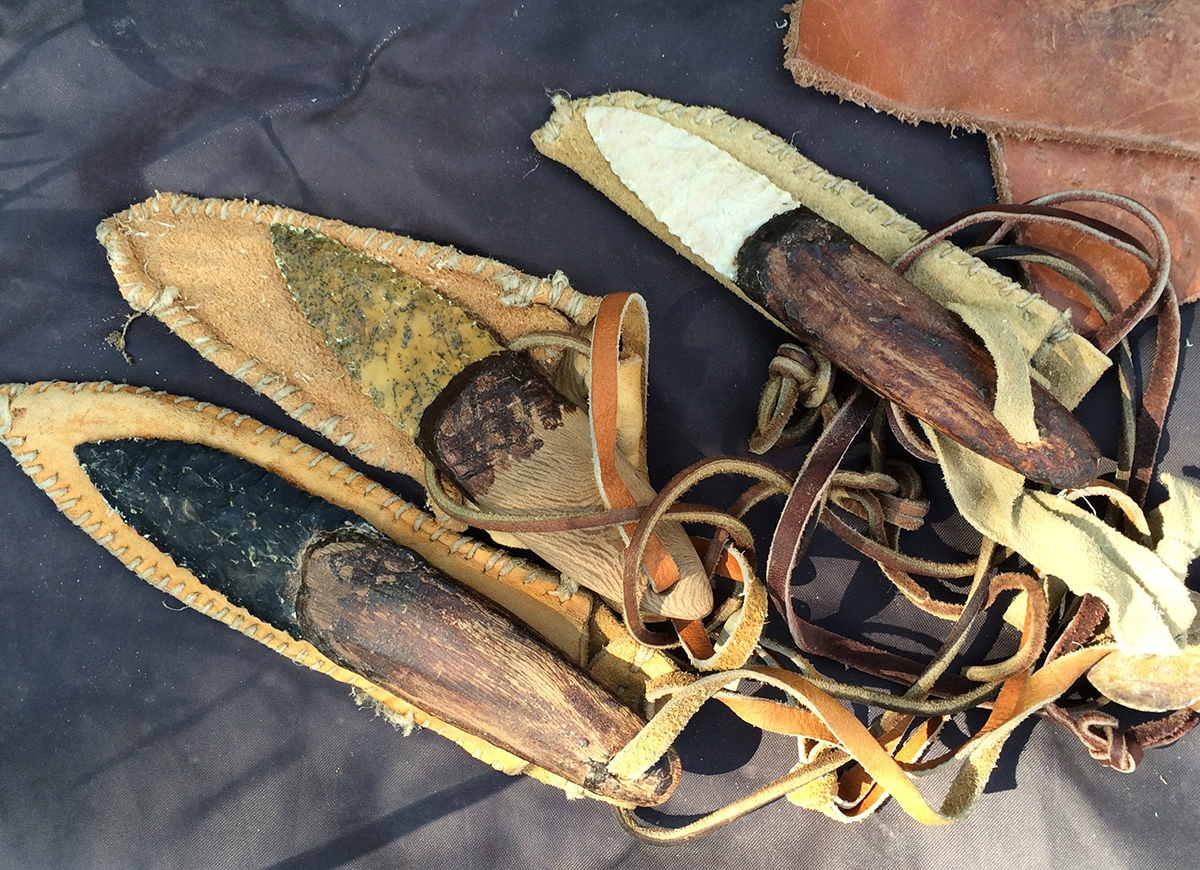
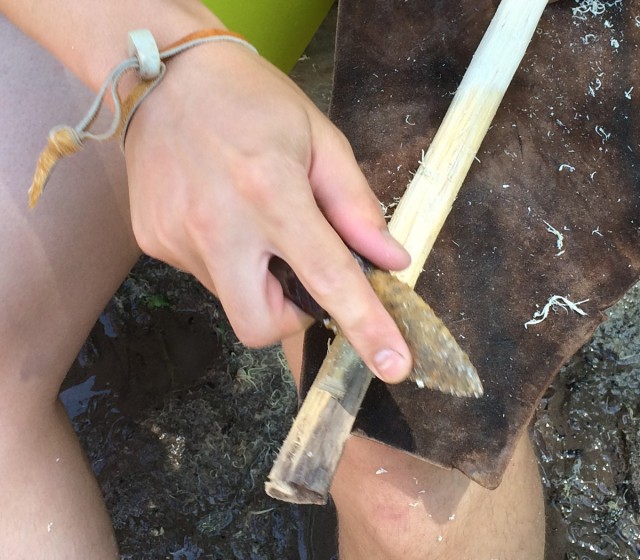
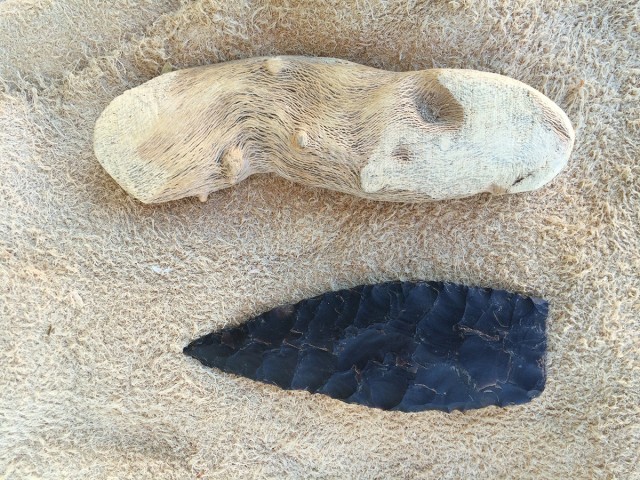
Materials:
Stone knife blade (biface)
Handle wood (here, I use saguaro root)
Pine-pitch resin (see my post on how to make this here)
Optional: Leather, hemp cordage
1:
Saw a notch all the way around the root selected for your handle. Cut the notch as deep as you can, then bend the root back and forth. It should break without splintering. Now you are ready to grind it to shape.
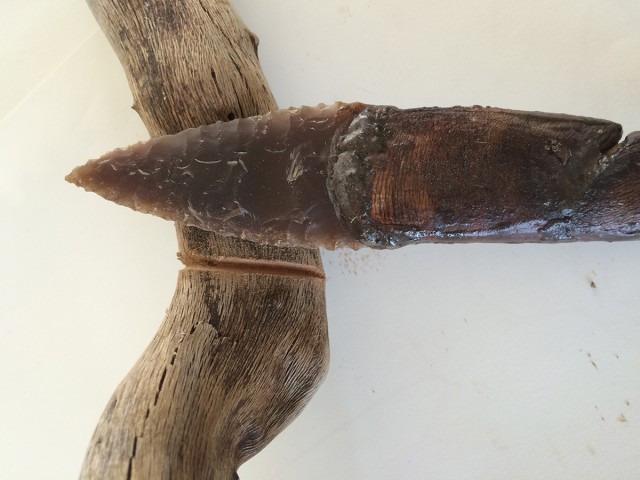 |
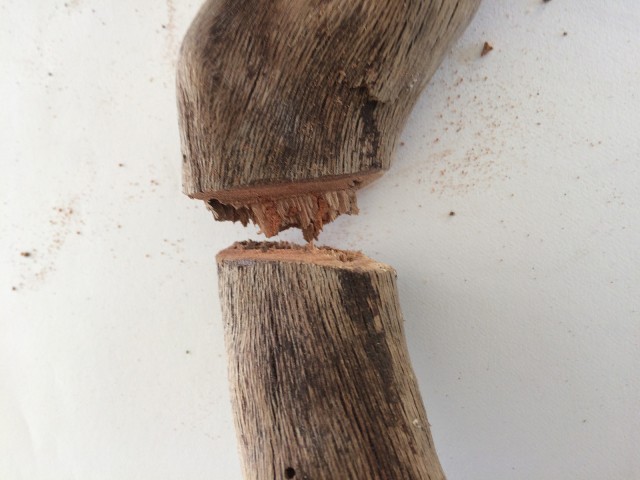 |
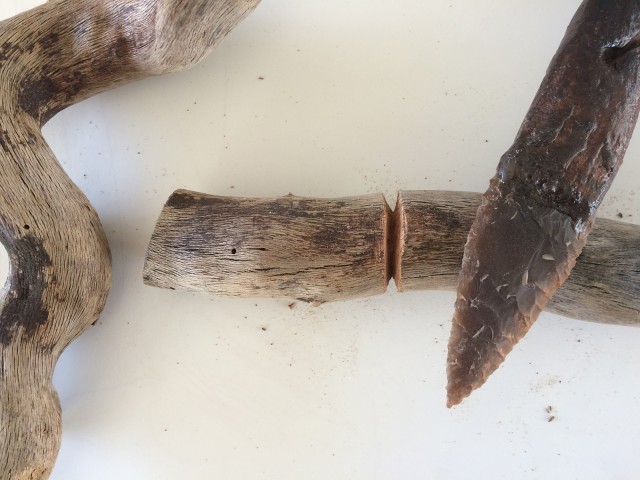 |
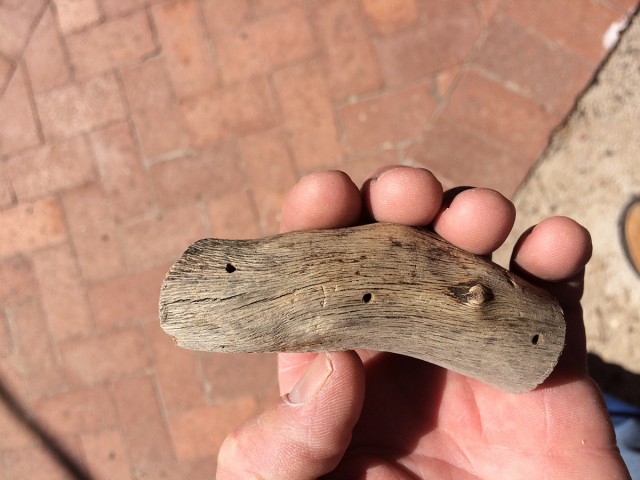 |
2:
Grind to shape on coarse rock or sandstone. I used some weathered concrete to grind this handle out. Make sure to leave it thick enough to make the notch for inserting the blade into the handle.
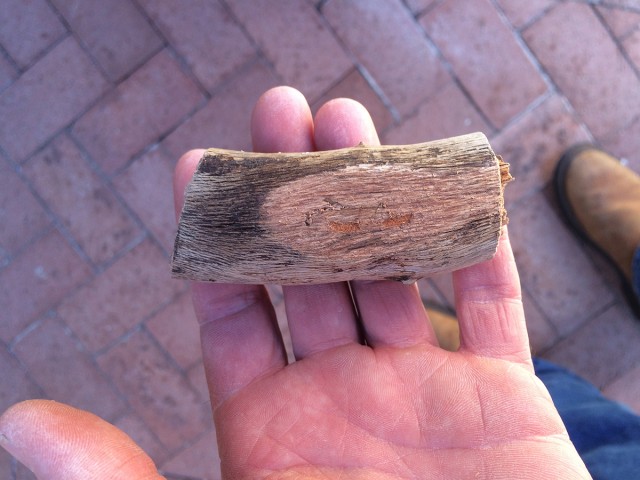 |
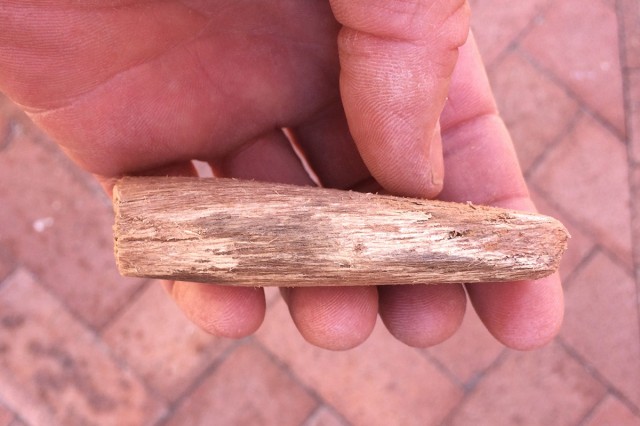 |
3:
Using a knife or final biface, saw a deep notch down the middle of the thicker handle end. This notch must be deep enough to secure the blade nicely in the handle. If the notch is not deep enough, the blade will pop out when you use the knife for heavy work. Be careful to avoid cutting your hand!
 |
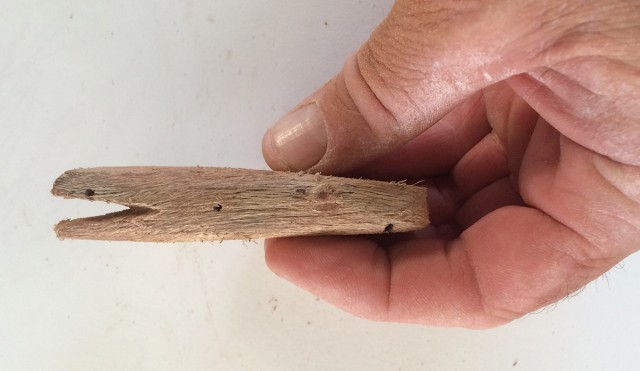 |
In my previous post, I showed how to make the resin we use for hafting. We heat the pitch and mix in ground elk droppings—about one part manure to three parts pitch. Then, we smush the pitch around a small stick, so it can be stored and ultimately held in the hand for reheating. I like to use a hot air gun for heating the pitch, because it is safer than fire—the pitch is incredibly flammable. To haft, reheat the pitch until the outside softens and appears bubbly, but not to the point that it is dripping off the end of the stick.
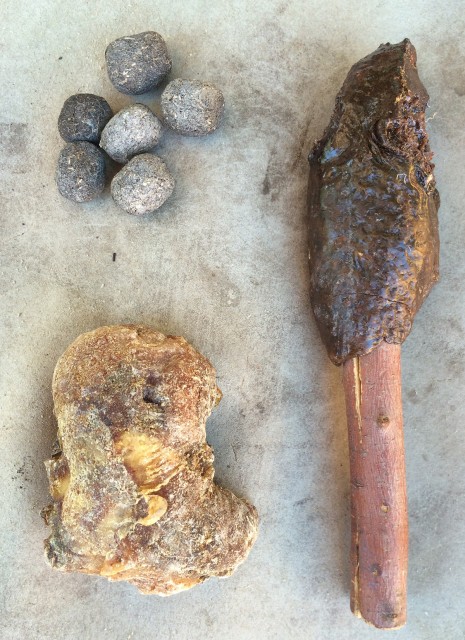 |
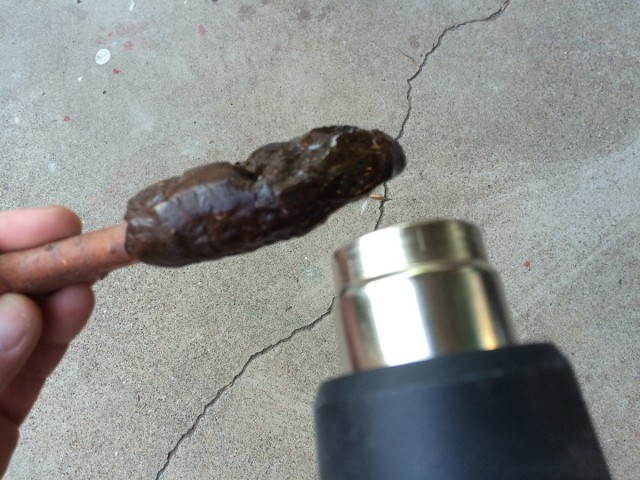 |
4:
Scrape some resin into the notch for blade, then push the blade into the resin and add more to tightly secure the blade. You may need to reheat the resin several times to smush it around to the desired thickness. The resin will be very hot and can burn your hand—be careful! I use a stick to push the hot resin around. Then, as it cools, I use my fingers to smooth it.
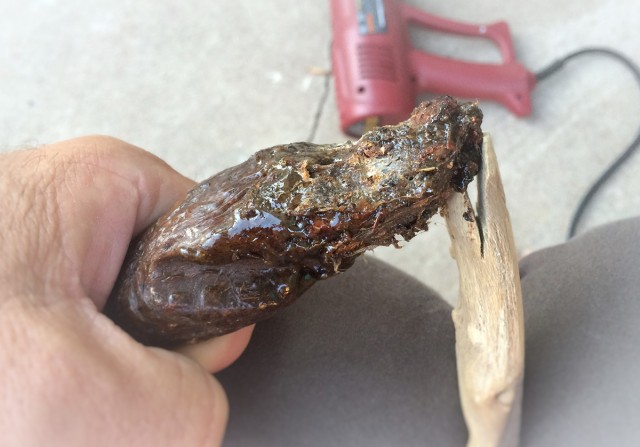 |
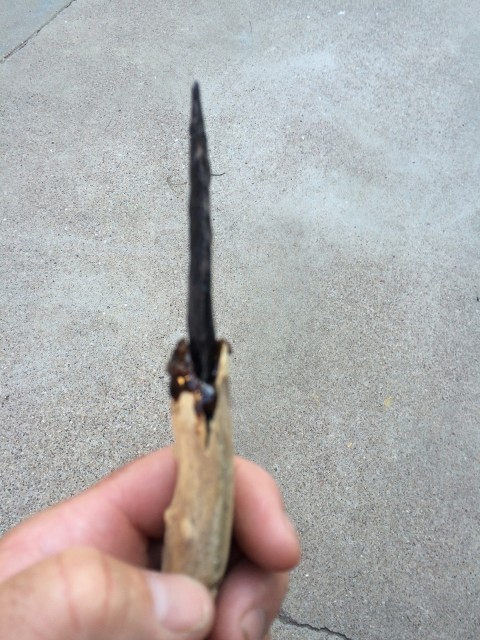 |
5:
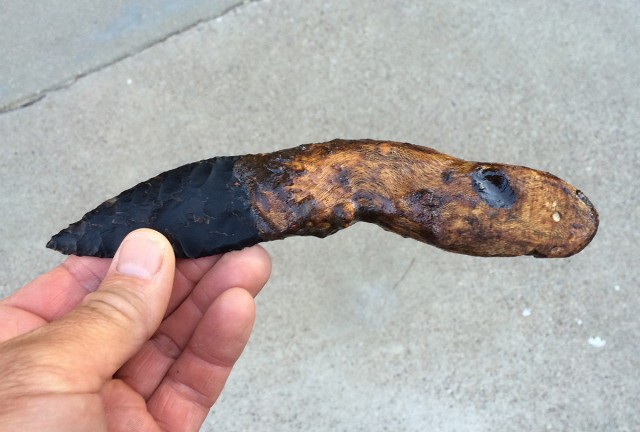 |
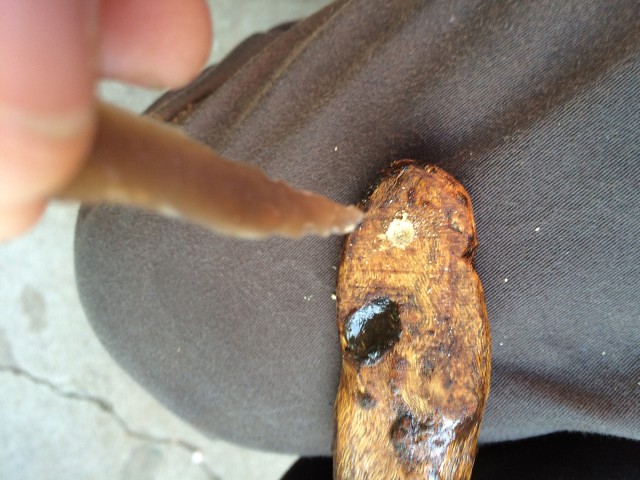 |
I like to coat the entire handle in resin. This makes it water resistant and improves the grip. Then, I drill (with a flaked stone drill) a hole through the end of the handle to attach a leather strap that goes around my hand when the knife is in use.
|
|

